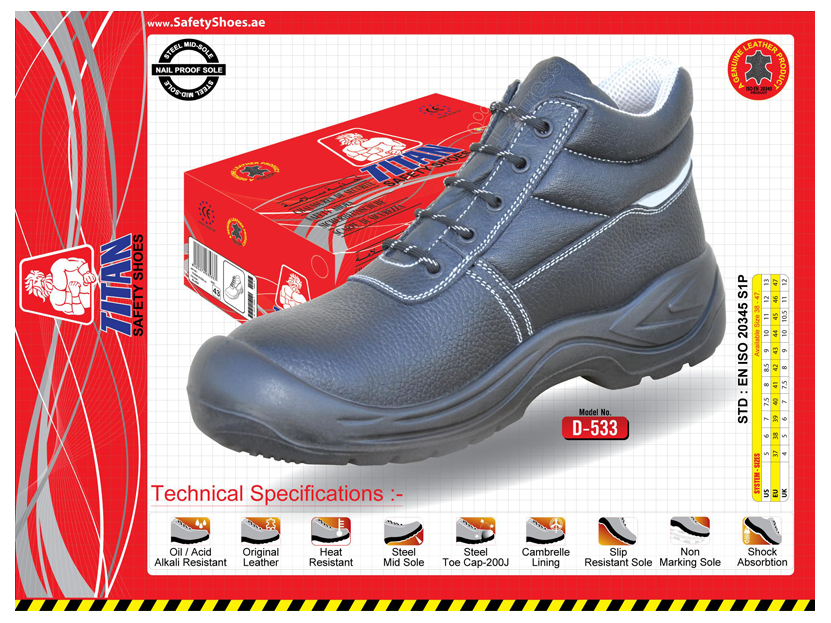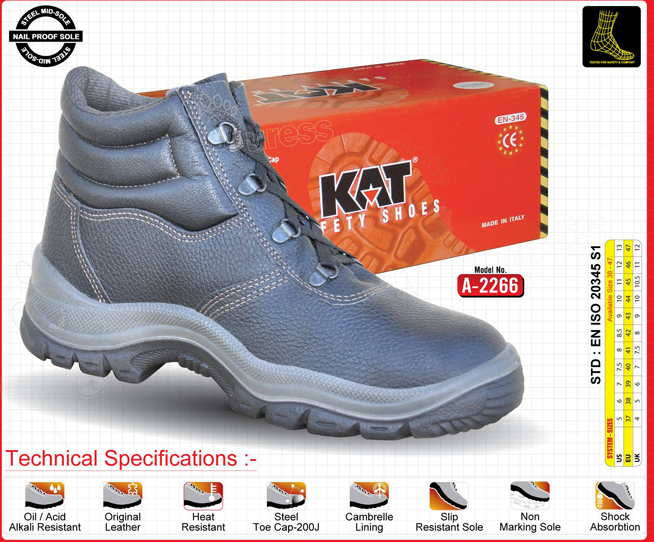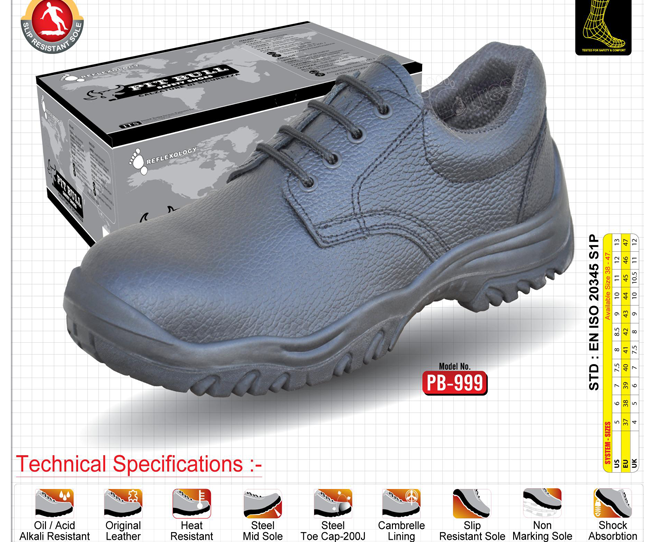Famveco Interprise
PERSONAL PROTECTIVE EQUIPMENT- Safety shoes
The Importance of Safety Shoes
Safety shoes are the most common type of personal protective equipment (PPE) in the workplace. While PPE does not guarantee protection, this equipment does minimize exposure to occupational hazards. It is important to know what style of shoe is necessary for a particular type of work and what type of shoe offers the most comfort.
Statistics
Foot injuries take longer to heal than many other common injuries. Sprains and fractures are the most frequent injuries in the workplace. Nineteen percent of injuries involve feet and lower limbs, costing approximately $6,000 per injury. The National Safety Council reports there 110,000 injuries to the feet and toes of American workers each year with each injury averaging seven missed workdays.
Foot Injuries
Below is a list of the most common injuries that are sustained when safety footwear is not worn.
- Crushed feet, broken bones and loss of toes. These injuries are more common in the construction industry but they are also reported in the logging and fishing industry too.
- Puncture wounds to the feet. If you work where nails, staples or even scrap metal is used then this can happen when safety footwear is not worn.
- Cuts, lacerations and severed toes are common for those who work with machinery such as chain saws.
- Burns. These can be from chemicals or hot metal splashes.
- Electric shocks. These are most common for electricians and construction workers.
- Sprains and fractures can happen in any workplace and are normally caused by trips and falls
Protection
- Safety shoes can provide protection for both impact and puncture injuries. Workers who carry or handle heavy packages or materials, or who work where objects may fall on or be rolled over feet, should wear impact protection. Puncture protection can prevent injuries when a worker steps on nails, scrap metal, wires, tacks, screws and large staples. Insulating or conductive shoes may also be necessary for certain types of electrical work.
Workplace Safety
- Employee management, accountability, safety programs, safety policies, inspections for workplace hazards, training and appropriate attire are all critical components to ensure workers are protected.
Why safety shoes?
In the USA there are over 100,000 injuries that are reported in the workplace each and every year that cost companies up to $1 billion.
This cost and the distress that employees face is not restricted to the USA and there are many countries worldwide that are not implementing stricter policies that ensure that workplace safety is adhered to. In Canada foot injuries have reduced by 60% because of the implementation of mandatory protective footwear.
Most people assume that foot injury comes from working in dangerous environments but there are a lot of other injuries that can take their toll too. Blisters, dropped arches and even aches and pain can cause employees to take time off work.
More and more countries are introducing mandatory safety footwear regulations to guarantee protection in the workplace. Steel toed boots are designed to protect the top of the feet. Safety boots and shoes are also been fitted with impact protection also. There are impact absorbing soles and ankle collars fitted to some safety footwear for additional support. Safety trainers are also being made that come with puncture protection. There are also anti slip safety shoes.
With so many different types of safety shoes and boots available there really is no reason not to protect your feet no matter what type of environment you work in.
Safety Products
 Hellmets
Hellmets
Protective gear from sprains and fractures that can happen
in any workplace and are normally caused by trips and falls
 Hand gloves
Hand gloves
Protection from burns that can be from chemicals or hot
metal splashes.
Electric shocks. These are most common for
electricians and construction workers.










